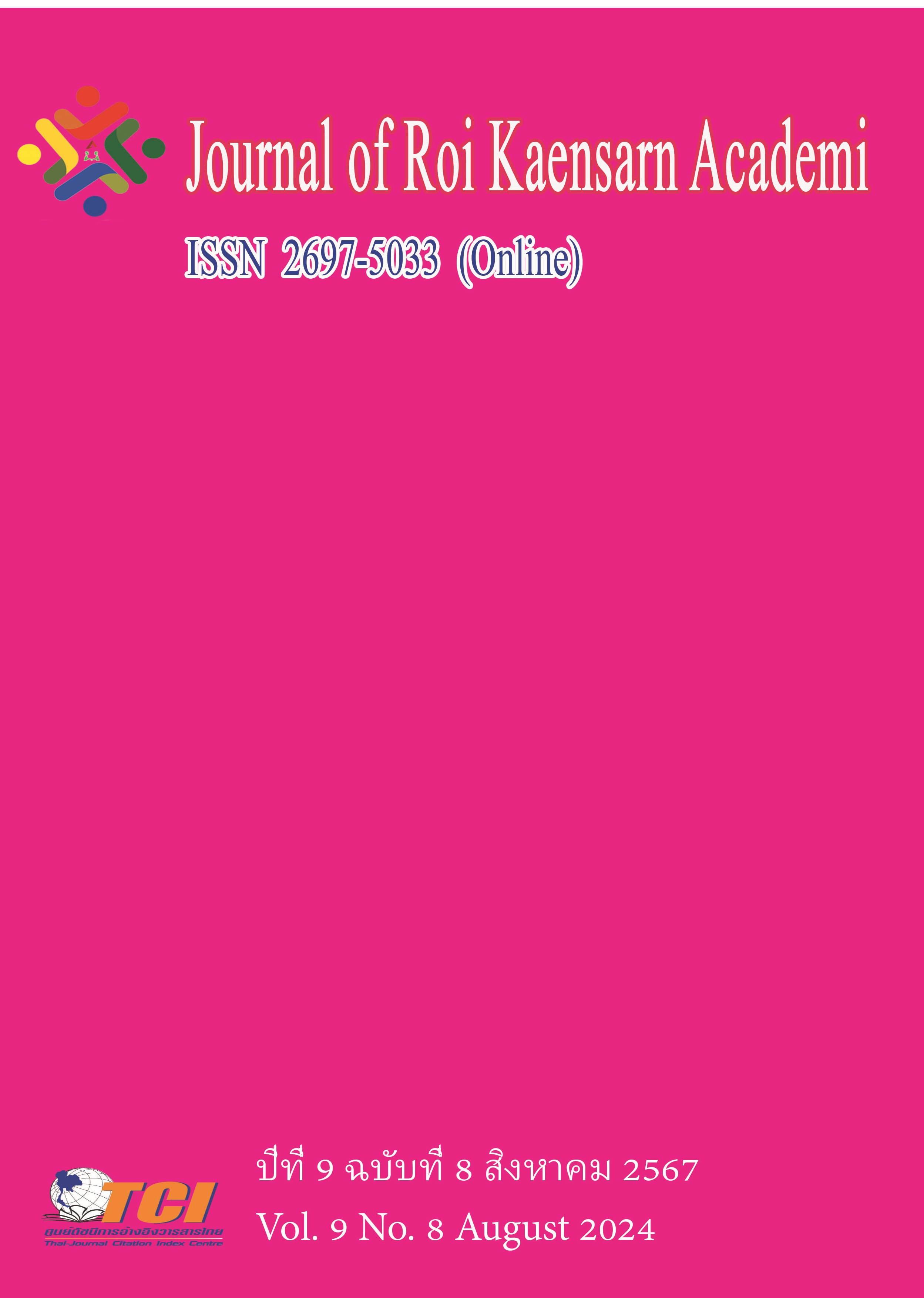ความสัมพันธ์เชิงสาเหตุของความสามารถองค์การในการพัฒนา สมรรถนะทางเทคโนโลยีสำหรับพนักงานธุรกิจการบินที่ส่งผลต่อ ความเป็นเลิศทางการบริการและผลการดำเนินธุรกิจ
Main Article Content
บทคัดย่อ
ในปัจจุบัน ธุรกิจการบินมีการแข่งขันและพัฒนาอย่างรวดเร็วโดยการเปลี่ยนแปลงของสภาพแวดล้อมภายนอกองค์การและความก้าวหน้าทางเทคโนโลยีเป็นตัวขับเคลื่อนสำคัญของความสำเร็จขององค์การการศึกษานี้บูรณาการทฤษฎีมุมมองฐานทรัพยากร ทฤษฎีการบริหารเชิงสถานการณ์ และทฤษฎีเชิงระบบ โดยมีวัตถุประสงค์เพื่อ 1) ทดสอบความสัมพันธ์ของการจัดการความซับซ้อนของธุรกิจและการบริหาร ความเสี่ยงขององค์กรที่มีต่อความสามารถองค์การในการพัฒนาสมรรถนะทางเทคโนโลยีสำหรับพนักงาน 2) ทดสอบความสัมพันธ์ของความสามารถองค์การในการพัฒนาสมรรถนะทางเทคโนโลยีสำหรับพนักงานที่มีต่อความเป็นเลิศทางการบริการและผลการดำเนินธุรกิจ และ 3) ตรวจสอบความสอดคล้องของรูปแบบความสามารถองค์การในการพัฒนาสมรรถนะทางเทคโนโลยีสำหรับพนักงานกับข้อมูลเชิงประจักษ์ การวิจัยเชิงปริมาณโดยเก็บข้อมูลด้วยแบบสอบถามจากผู้บริหารองค์การธุรกิจการบิน จำนวน 220 ธุรกิจ แล้วใช้การวิเคราะห์เส้นทางและการวิเคราะห์โมเดลสมการโครงสร้างเพื่อทดสอบความสัมพันธ์เชิงสาเหตุและผลลัพธ์ ตามผลการวิเคราะห์องค์ประกอบเชิงยืนยัน พบว่าตัวแบบมีความสอดคล้องกับข้อมูลเชิงประจักษ์ โดยมีค่า ไคสแควร์เท่ากับ 350.123 ที่องศาอิสระเท่ากับ 194 ระดับนัยสำคัญทางสถิติเท่ากับ 0.23 ค่าไคสแควร์สัมพัทธ์เท่ากับ 1.80 ค่าดัชนีวัดความกลมกลืนเชิงสัมพัทธ์ (CFI) เท่ากับ 0.98 ค่าดัชนีวัดความกลมกลืน (GFI) เท่ากับ 0.98 ค่าดัชนีวัดความกลมกลืนที่ปรับแก้แล้ว (AGFI) เท่ากับ 0.97 และค่ารากที่สองของความคลาดเคลื่อน ในการประมาณค่า (RMSEA) เท่ากับ 0.01 ผลการวิจัยสามารถนำไปใช้ในการพัฒนาสมรรถนะทางเทคโนโลยีสำหรับพนักงาน ทำให้องค์การธุรกิจการบินเกิดความเป็นเลิศทางการบริการและผลการดำเนินธุรกิจ
Article Details
เอกสารอ้างอิง
กัลยา วานิชย์บัญชา. (2556). การวิเคราะห์สถิติ: สถิติสำหรับการบริหารและวิจัย. กรุงเทพมหานคร: จุฬาลงกรณ์มหาวิทยาลัย.
ประเวศน์ มหารัตน์สกุล. (2560). กลยุทธ์การวางแผน และการจัดการ. กรุงเทพมหานคร: ส.เอเชียเพรส.
ยุทธ ไกยวรรณ์. (2563). การวิเคราะห์โมเดลสมการโครงสร้างด้วย AMOS. กรุงเทพมหานคร: ศูนย์หนังสือจุฬา.
สำนักงานการบินพลเรือนแห่งประเทศไทย. (2566). สถานประกอบการอุตสาหกรรมการบิน. ออนไลน์. สืบค้นเมื่อวันที่ 1 สิงหาคม 2566. แหล่งที่มา: https://aviation-io.caat.or.th/aviation-industries
Akingbola, K. (2013). Contingency, fit and flexibility of HRM in nonprofit organizations. Employee Relations. 35 (5), 479-494.
Barney, J.B. (2001). Is the resource-based view a useful perspective for strategic management research?. Academy of Management Review. 26 (1) 41-56.
Blanka, C., Krumay, B. & Rueckel, D. (2022). The interplay of digital transformation and employee competency: A design science approach. Technological Forecasting and Social Change, 121575.
Blome, C. & Schoenherr, T. (2011). Supply chain risk management in financial crises-A multiple case-study approach. International Journal of Production Economic. 134 (1), 43-57.
Colbert, A., Yee, N. & George, G. (2016). The digital workforce and the workplace of the future. Academy of Management Journal. 59 (3), 731–739.
Hair, J.F., Black, W.C., Babin, B.J., & Anderson, R.E. (2010). Multivariate data analysis. (7th ed.). New Jersey: Prentice Hall.
Hetland, J., Hetland, H., Bakker, A.B., Demerouti, E., Andreassen, C.S. & Pallesen, S. (2015). Psychological need fulfillment as a mediator of the relationship between transformational leadership and positive job attitudes. Career Development International. 20 (5), 464-481.
Hoonakker, P. & Carayon, P. (2009). Questionnaire survey nonresponse: A comparison of postal mail and Internet surveys. International Journal of Human Computer Interaction. 25 (5), 348-373.
Huegli, D., Merks, S. & Schwaninger, A. (2020). Automation reliability, human-machine system performance, and operator compliance: A study with airport security screeners supported by automated explosives detection systems for cabin baggage screening. Applied Ergonomic. 86, 103094.
ICAO. (2019). Aviation Benefits Report 2019. Online. 12 August, 2023. Retrieved from https://www.icao.int/sustainability/Documents/AVIATION-BENEFITS-2019web.pdf
Jiménez-Jiménez, D. & Martínez-Costa, M. (2009). The performance effect of HRM and TQM: A study in Spanish organizations. International Journal of Operation & Production Management. 29 (12), 1266-1289.
Lamb, S., Maire, Q. & Doecke, E. (2017). Key Skills for the 21st Century: An evidence- based review. Project Report. NSW Department of Education: Sydney.
Ng, J. (2023). Future Air Hub: Navigating the Post-Pandemic Landscape. Association of Aerospace Industries (Singapore). Online. 20 June, 2023. Retrieved from https:// aais.org.sg/wp-content/uploads/2023/03/Aerospace-Singapore-V16N1-Feature_ Future-of-Air- Hub.pdf
Pereira, V., & Bamel, U. (2021). Extending the resource and knowledge based view: A critical analysis into its theoretical evolution and future research directions. Journal of Business Research. 132, 557–570.
Robbins, S.P., & Coulter, M. (2002). Management. New Jersey: Upper Saddle River.
Schein, E. H. (2004). Organizational culture and leadership. 3rd ed. Sanfanciso, CA: Jossey-Bas.
Time Aerospace. (2019). Data, digital transformation to drive future customer experience. Online. 20 June, 2023. Retrieved fromhttps://www.timesaerospace.aero/news/ technology/iata-data-digital-transformation-to-drive-future-customer-experien
Varandas, C. & Fernandes, C. & Veiga P.M. (2024). Human resource management in ambidextrous organizations – A systematic literature review. Technology in Society, 77, 102504.
Vial, G. Understanding digital transformation – A review and a research agenda. The Journal of Strategic Information System. 28 (2), 118-144.
Weihrich, H., Cannice, M. & Koontz, H. (2008). Management: A global and entrepreneurial perspective. (12th edition). New York: McGraw-Hill.
Weng, W.T. (2015). Eight Skill In Future Work. Texas A & M University. Education 135(4) Online. 25 June, 2023. Retrieved from https://www.researchgate.net/publication/ 33886719

